
Daily Dose Of Jazz…
Jeffrey Ovid Clyne was born on January 29, 1937 in London, England and taught himself double bass from the age of 17. He played in the 3rd Hussars military band during his national service from 1955 to 1957, and on demobilisation found himself at the cutting edge of the British modern-jazz and bebop movement.
Clyne worked with Tubby Hayes and Ronnie Scott in their group the Jazz Couriers for a year from 1958, and was part of the group of musicians who opened Ronnie Scott’s Jazz Club in November 1959. He was a regular member of Hayes’ groups from 1961. He accompanied Blossom Dearie, Stan Tracey on his Jazz Suite Inspired by Dylan Thomas’ Under Milk Wood album, Ian Carr, and Gordon Beck on Experiments With Pops, with John McLaughlin.
Jeff would go on to perform with Dudley Moore, Zoot Sims, Norma Winstone, John Burch and Marion Montgomery. He was a member of Nucleus, Isotope, Gilgamesh, Giles Farnaby’s Dream Band and Turning Point during the 1970s. He often worked with drummer Trevor Tomkins.
Bass guitar and double bassist Jeff Clyne died on November 16, 2009 from a heart attack at the age of 72.
More Posts: bandleader,bass,bass guitar,history,instrumental,jazz,music
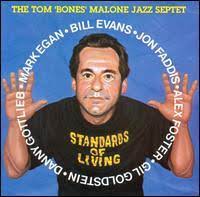
Daily Dose Of Jazz…
Thomas “Bones” Malone was born June 16, 1947 in Honolulu, Hawaii. He began playing professionally as lead trumpeter for Brenda Lee at a club in Jackson, Mississippi while enrolled at the University of Southern Mississippi. In response to a call from Warren Covington, leader of the Tommy Dorsey Orchestra, he began contracting musicians. After transferring to North Texas State University, Malone continued working as both a player and a contractor for groups. He graduated from North Texas State University with Lou Marini, and both were members of the One O’Clock Lab Band at North Texas.
After graduation, he worked in bands of Woody Herman in 1969, and during the early Seventies he worked with Duke Pearson, Louie Bellson, Doc Severinsen, Frank Zappa, and Blood, Sweat & Tears. In 1973, Malone began a close, fifteen-year association with Gil Evans, whom he has called a mentor. He recorded albums with Evans and toured Europe, Japan, and the Far East. In 1975 Malone toured with Billy Cobham and in 1976 with The Band.
From 1975 to 1985 he worked as arranger for Saturday Night Live and from 1981 to 1985 as musical director. He wrote the chart for the skit that introduced John Belushi and Dan Aykroyd as the Blues Brothers and worked on the film score for Blues Brothers 2000. He joined the CBS Orchestra in 1993, and contributed more than 1,600 arrangements to the Late Show with David Letterman.
As a studio musician, he has been heard on more than 1,000 records, more than 3000 radio and television commercials, and over 4,000 live television shows. In 2007 Bones was invited by music director Geoffrey Moull to arrange and perform a concert with the Thunder Bay Symphony Orchestra. In 2011 Malone was a guest artist with the University of Southern Mississippi Symphony Orchestra.
Trombonist, arranger, and producer Tom Malone, who also plays saxophone, trumpet, tuba, flute, and bass guitar, continues to expand his creative reach.
More Posts: bass guitar,flute,history,instrumental,jazz,music,saxophone,trombone,trumpet,tuba
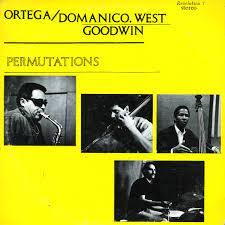
Daily Dose Of Jazz…
Charles Louis Domanico, better known professionally as Chuck Domanico, was born on January 20, 1944 in Chicago, Illinois. Settling in Los Angeles, California in the mid-1960s, for nearly forty years, he was a central jazz figure in Hollywood who contributed to many movies and TV programs.
Domanico worked with Frank Sinatra, Barbra Streisand, Carmen McRae, Joni Mitchell, Taj Mahal, Diane Schuur, Natalie Cole, and The Manhattan Transfer. He participated in instrumental jazz performances by Chet Baker, Henry Mancini, Shelly Manne, Oliver Nelson, John Klemmer, Roger Kellaway, Barney Kessel, and Art Pepper.
His bass can be heard in themes for television shows like M*A*S*H, Cheers and Frasier, and he contributed to the soundtracks of more than two thousand films.
Double bassist and bass guitarist Chuck Domanico, who played on the West Coast jazz scene, transitioned from lung cancer on October 17, 2002 at the age of 58.
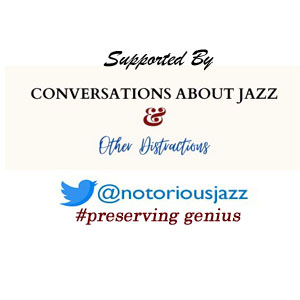
More Posts: bass,bass guitar,history,instrumental,jazz,music
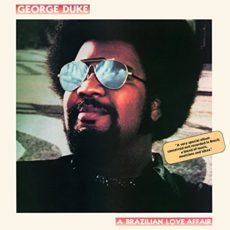
Daily Dose Of Jazz…
George Duke was born on January 12, 1946 in San Rafael, California and raised in Marin City. It was at the young age of 4 that he first became interested in the piano when his mother took him to see Duke Ellington in concert. He began his formal piano studies at the age of 7, at his local Baptist church. Attending Tamalpais High School in Mill Valley, he went on to earn a bachelor’s degree in trombone and composition with a minor in contrabass from the San Francisco Conservatory in 1967.
Initially he played with friends from garages to local clubs, George quickly eased his way into session work, before getting his master’s degree in composition from San Francisco State University. Although starting out playing classical music, his musician cousin Charles Burrell convinced him to switch to jazz and improvise what he wanted to do.
1967 saw Duke venturing into jazz fusion, playing and recording with violinist Jean-Luc Ponty, as well as performing with the Don Ellis Orchestra, and Cannonball Adderley’s band, and recorded with Frank Zappa and The Mothers of Invention on a number of albums through the 1970s. He also played with Ruth Underwood, Tom Fowler, Bruce Fowler from Zappa’s Overnite Sensation band that he was a part of, along with Johnny “Guitar” Watson and jazz guitarist Lee Ritenour. Lynn Davis and Sheila E recorded with him on his late-1970s solo albums Don’t Let Go and Master of the Game.
During the 1980s he collaborated with bassist Stanley Clarke and produced the Clarke/Duke Project that released three albums, he served as a record producer and composer on two instrumental tracks on the Miles Davis albums Tutu and Amandla, worked with a number of Brazilian musicians, including singer Milton Nascimento, percussionist Airto Moreira and singer Flora Purim, and in the 1992 film Leap of Faith featured gospel songs and choir produced by him and choir master Edwin Hawkins.
Duke was musical director for the Nelson Mandela tribute concert at Wembley Stadium in London, temporarily replaced Marcus Miller as musical director of NBC’s late-night music performance program Sunday Night during its first season, and was a judge for the second annual Independent Music Awards to support independent artists’ careers. He worked with Jill Scott on her third studio album, The Real Thing: Words and Sounds Vol. 3; and put together a trio with David Sanborn and Marcus Miller for a tour across the United States.
His educator side had him teaching a course on Jazz And American Culture at Merritt College in Oakland, California. He was nominated for a Grammy as Best Contemporary Jazz Performance for After Hours in 1999, was inducted into The SoulMusic Hall Of Fame in 2012, and was honored with a tribute album My Old Friend: Celebrating George Duke, produced by long-time friend and collaborator Al Jarreau, that received a NAACP Image Award for Outstanding Jazz Album in 2015.
As leader he recorded some four dozen albums and as sideman he worked with such artists as Third World, The Keynotes, Gene Ammons, Billy Cobham, Eddie Henderson, Alphonse Mouzon, Michael Jackson, Deniece Williams, Miles Davis, Dianne Reeves, John Scofield, Chanté Moore, Joe Sample, Phil Collins, Regina Belle, Teena Marie, Joe Williams, Gerald Wilson and Larisa Dolina among many others.
Keyboard pioneer, vocalist guitarist, trombonist, producer and composer George Duke passed away on August 5, 2013 in Los Angeles, California from chronic lymphocytic leukemia. He was 67. His songs have been sampled by Daft Punk, Kanye West and Ice Cube among numerous others.
![]()
#preserving genius
More Posts: bass guitar,flute,keytar,piano,saxophone,synthesizer,trombone,vocal
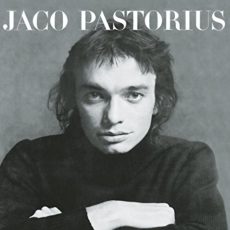
Daily Dose Of Jazz…
Jaco Pastorius was born John Francis Anthony Pastorius III on December 1, 1951 in Norristown, Pennsylvania to Jack Pastorius, a big band singer and drummer. Shortly after his birth the family moved to Oakland Park, Florida, where he went to elementary and middle school at St. Clement’s Catholic School in Wilton Manors. Picking up music at an early age he formed his first band named the Sonics along with John Caputo and Dean Noel while in high school at Northeast High. He was also a talented athlete playing football, basketball, and baseball. His nickname came from a play on the spelling of umpire Jocko Conlan when French pianist Alex Darqui assumed Jaco was the correct spelling.
Following in the footsteps of his father Jack, playing the drums until he injured his wrist playing football at age 13. Pastorius then bought an electric bass from a local pawn shop for $15, began to learn to play with drummer Rich Franks, and switched from drummer to becoming the bassist for the Las Olas Brass.band. By the age of 17 he had begun to appreciate jazz and had saved enough money to buy an upright bass. Though its deep, mellow tone appealed to him, it strained his finances and had difficulty maintaining the instrument, and one day found it had cracked. At that point he traded it in for a 1962 Fender Jazz Bass.
His first real break came when he became bass player for Wayne Cochran and the C.C. Riders. He also played on various local R&B and jazz records with Little Beaver and Ira Sullivan. At 22, Jaco began teaching bass at the University of Miami, where he met student Pat Metheny in 1972, but he was too advanced a player to remain a student and likewise became part of the UM music faculty at the age of 18. By 1974 they began playing and recording together, first with pianist Paul Bley as leader and Bruce Ditmas on drums, on an album later titled Jaco, on the Paul Bley/Carol Goss Improvising Artists label. They followed this with drummer Bob Moses on a trio album on the ECM label, titled Bright Size Life in 1976).
1975 saw Pastorius introduced to Blood, Sweat & Tears drummer Bobby Colomby, who had been asked by Columbia Records to find new talent for their jazz division. This meeting produced his debut album as a leader titled Jaco Pastorius in 1976, that became a breakthrough album for the electric bass, and is considered by many as the finest bass album ever recorded. The album also boasted a lineup of heavyweights Herbie Hancock, Wayne Shorter, David Sanborn, Lenny White, Hubert Laws, Don Alias, and Michael Brecker, as well as, soul singers Sam & Dave, who reunited to appear on the track Come On, Come Over.
He joined Weather Report after a somewhat rocky introduction after a Miami concert to Joe Zawinul, claiming he expected more from the band. Put off by his comments, Pastorius persisted and an admiration soon formed for the brash young bassist who claimed to be the best in the world. A demo tape and correspondence followed and in 1976 he joined Weather Report during the recording sessions for Black Market, and for the next five years became a vital part of the band by virtue of the unique playing qualities, his skills as a composer and arranger, and his exuberant showmanship on stage.
Pastorius guested on many albums by Ian Hunter of Mott the Hoople, David Sanborn, Aynsley Dunbar, Joni Mitchell, Al Di Meola, Flora Purim, Airto Moreira, Mike Stern, guitarist Bireli Lagrene and drummer Brian Melvin. In 1985, he recorded an instructional video, Modern Electric Bass, hosted by bassist Jerry Jemmott.
Following Weather Report he put together the big band project Word Of Mouth with Herbie Hancock, Wayne Shorter, Peter Erskine, Toots Thielemans, and Hubert Laws in tow. Though well produced on both coasts and in Belgium, the album didn’t do well as audiences were moving away from improvisation and chamber like jazz rock for a more commercially viable sound in the late Seventies. Warner Bros. released him from his contract and he had difficulty getting signed afterwards.
Now in his thirties Pastorius began touring in 1982 and his visit to Japan, though a highlight, surfaced the beginnings of deteriorating behavior. He shaved his head, painted his face black and threw his bass into Hiroshima Bay at one point. In his early career Pastorius had avoided alcohol and drugs. With Weather Report he increasingly used alcohol and other drugs, the abuse of which exacerbated his mental issues and led to increasingly erratic and sometimes anti-social behavior. He was diagnosed with bipolar disorder in late 1982 following his Word of Mouth tour of Japan.
By 1986, Pastorius’s health had further deteriorated, he began living on the streets after being evicted from his New York apartment, was admitted to Bellevue Hospital in New York, where he was prescribed carbamazepine in preference to lithium. He moved back to Fort Lauderdale and again lived on the streets for weeks at a time. After sneaking onstage at a Carlos Santana concert in 1987 and being ejected, he kicked in the glass door of the Midnight Bottle Club in Wilton Manors, engaged in a violent confrontation with the club bouncer Luc Havan, that left him hospitalized with multiple facial fractures, injuries to his right eye and left arm.
He fell into a coma and a massive brain hemorrhage a few days later led to brain death for bassist Jaco Pastorius, passing away on September 21, 1987 at Broward General Medical Center in Fort Lauderdale, Florida. He was 35. In 1988, following his death, he was elected by readers’ poll for inclusion in the Down Beat Hall of Fame, the second bassist honored in this way. To date, only seven bassists have been inducted, the others being Jimmy Blanton, Ray Brown, Ron Carter, Charles Mingus, Charlie Haden and Milt Hinton.
Sponsored By
![]()
More Posts: bass guitar





